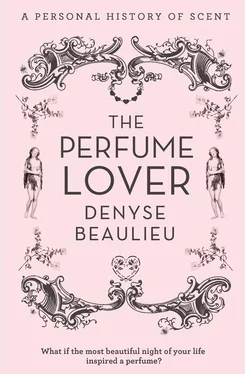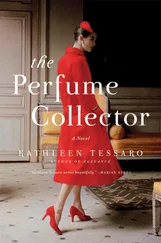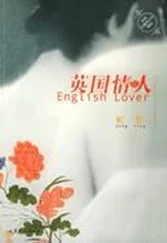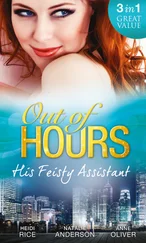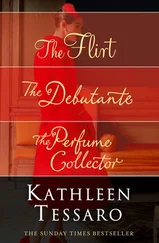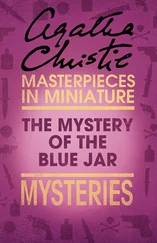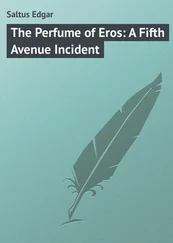Despite the breathless sales pitches, if fifteen per cent of what’s in your bottle comes from a thing that was alive at some point, you’re doing well. Any more would cut into profit margins. Natural materials are not always more expensive than synthetics, but they’re harder to source. A drought, a flood, a war will make prices shoot up. Crops don’t smell exactly the same from one year to another, so that you may have to mix essences from different sources to achieve the same effect in every batch of perfume, a practice called the communelle. With synthetics, on the other hand, you can produce batch after batch without worrying about Nature’s tantrums or geopolitical flare-ups.
It’s not just a matter of price or convenience. Glamorous, exotic and irreplaceable as natural essences may be, it is to synthetics that we owe modern perfumery, and many of the greatest breakthroughs came about as perfumers learned to use them. Synthetics allowed perfumers to structure their compositions by strengthening the relevant facets of natural materials; to conjure the desired effect with a few notes rather than having to draft the entire orchestra of the natural essence; to produce entirely new perfumes. In fact, without synthetics, perfumery would exist neither as an industry, nor as an art.
When Gabrielle Chanel asked Ernest Beaux to come up with a fragrance for her couture house, she told him two things, or so the legend goes (Chanel was not above retro-engineering her life story when it suited her purposes). First: ‘A woman must smell like a woman, not like a rose,’ a dig at her arch-rival of the time, the couturier Paul Poiret, whose logo was a rose and whose perfume line, the first ever to be launched by a couturier, was named Les Parfums de Rosine after one of his daughters. Chanel, a keen follower of the avant-garde, thought the figurative school of perfumery – ‘a rose is a rose is a rose’ – was as hopelessly outdated as the plumed and flowered hats she’d replaced with straw boaters. She didn’t care much either for the vampy scents her contemporaries doused themselves in. Her perfume, she decreed, should smell as clean as the soap-scrubbed skin of her friend, the famous courtesan Émilienne d’Alençon. But on the eve of the 20s, luxury perfumes still relied extensively on natural essences, many of which ended up leaving a rather rancid odour on the skin because flower extracts were often obtained by spreading the blossoms on mesh frames smeared with fat, a method called enfleurage. Fortunately, Ernest Beaux had a trick up his sleeve, a synthetic material he’d already been playing around with …
Since the late 19th century, organic chemistry had made giant steps, providing perfumers with synthetic materials that were stronger, cheaper, more stable and more readily available than natural materials (availability would particularly become an issue during World War I and its aftermath). These new synthetics allowed perfumers to forego references to nature. Just as the invention of the paint tube had allowed the Impressionists to set up their easels wherever they pleased to catch variations in light, or as the advent of photography had freed painters from naturalistic representation, technical progress fuelled new paradigms in perfumery. But synthetics were often harsh-smelling and only the best perfumers had the skill, the inspiration or the audacity to blend them into a high-quality product. Ernest Beaux was such a man.
On their own, aliphatic aldehydes give off a not particularly pleasant smell of citrus oil mixed with snuffed candles and hot iron on clean linen. They were mainly used in the synthetic versions of natural essences like rose because they had the property of boosting smells, which meant they were mostly found in cheaper products, or in small amounts in finer fragrances to produce fresh, clean, soapy notes – for instance, in Floramye by L.T. Piver, which happened to be a favourite of Mademoiselle Chanel’s … Beaux’s genius was to use aldehydes both for their booster effect and for their specific smell; to blend them with the noblest, most expensive raw materials; to figure out that they could produce just the required freshness by lifting the heavy scent of the oils and counteracting their rancidness. In the formula of what was to become N°5, he injected an unprecedented one per cent. Later on, he would write that he had been inspired by the icy smell of lakes and rivers above the Arctic Circle.
Did he produce the formula to Gabrielle Chanel’s specifications? Or had he already composed it for the company he was working for when Chanel sought him out? Beaux worked for Rallet, a supplier to the Tsar’s court, which had been forced by the Bolshevik revolution to move its operations to the South of France. Some industry old-timers claim that as Rallet didn’t have the means to exploit its products on a large enough scale (most of its assets had been abandoned in Russia), it decided to offer the formula of its Rallet N°1 to Chanel …
Whatever the truth of the story, the official legend is as much a part of the perfume as its actual substance: a masterpiece in its own right. But it was that very legend that clouded my perception of N°5 until I stumbled on a pristine, sealed 30s bottle that ripped the veil. Then, at last, I understood its radiant, abstract beauty because the raw materials in it were much closer to the ones Ernest Beaux had used to compose it; their subtle differences were sufficient to jar me out of the cliché that N°5 had become. If I love N°5 now, it is because of the sheer artistry of it, and I discovered that artistry not because it awoke fond memories, since I had none, but for the opposite reason: because of its strangeness. That strangeness is the very reason that led me to the once-forbidden realm of perfumery.
Some people have a signature fragrance that expresses their identity and signals their presence; its wake is an invisible country of which their body is the capital. I’m not one of those people.
I am a scent slut.
‘To seduce’ means ‘to lead astray’, off familiar paths and into thrillingly uncharted lands. To me, perfume is not a weapon of seduction but rather a shape-shifting seducer. I have been exploring the world of fragrance in the same way, and for the same reasons, that I’ve travelled erotic territories, spurred on by intellectual curiosity, sensuous appetites and the need to experiment with the full range of identities I could take on. And just as my experimental bent has driven me to different men, situations and scenarios to find out what I would learn through them, it has led me to different scents.
Perfume is to smells what eroticism is to sex: an aesthetic, cultural, emotional elaboration of the raw materials provided by nature. And thus perfumery, like love, requires technical skills and some knowledge of black magic. Both can be arts, though neither is recognized as such. And I’ve been studying both in the capital of love and luxury, Paris, where I settled half a lifetime ago. It is in Paris that I learned about l’amour; in Paris that I stepped through the looking glass into the realm of scent. I’ve had good teachers: discussing the delights of the flesh as passionately and learnedly as you would speak about art or literature is one of the favourite pastimes in my adopted country. Here, pleasure is intensified by delving into its nuances. By putting words to it. La volupté is taken very seriously indeed, a worthy subject for philosophizing in the boudoir. And so I’ve come to think of perfumes as my French lovers – a way for gifted artists to seduce me, parlez-moi-d’amour-me and reflect the many facets of my soul in eerily perceptive ways …
Blame Yves Saint Laurent and the Frenchwoman who revealed his existence to me via the first drop of perfume ever to touch my skin.
Читать дальше
